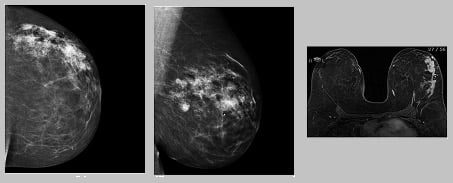Your cart is currently empty!

Breast Cancer Awareness & Reducing EMF Exposure to the Breasts
Last Updated on September 28, 2023

The level of research and volunteer work surrounding breast cancer is incredible, and with countless people knowing someone with cancer, or having experienced cancer themselves, this topic is truly universal.
Awareness levels are heightened like never before with this disease, and people are becoming more and more aware of risks and preventative measures. Knowledge is power, and taking control of what is within your reach is always a plus!
Breast Cancer Statistics
Unfortunately, one out of every eight women will develop invasive breast cancer in her lifetime.
Breast cancer is the most common cancer in American women, except for skin cancers.
As of January 2018, more than 3.1 million women in the United States have been recorded as having a history of breast cancer, including women currently being treated and women who have finished treatment.
A woman’s risk of breast cancer nearly doubles if she has a first-degree relative (mother, sister, daughter, etc.) who has been diagnosed with breast cancer.
The statistics surrounding this disease are important to understand so that people can put into perspective the importance of taking preventive measures when and where possible.
The American Cancer Society estimates the following statistics with regards to breast cancer in the United States for 2018:
- About 266,120 new cases of invasive breast cancer will be diagnosed in women.
- About 63,960 new cases of carcinoma in situ (CIS) will be diagnosed (CIS is non-invasive and is the earliest form of breast cancer).
- Breast cancer is the second leading cause of cancer death in women (only lung cancer kills more women each year). The chance that a woman will die from breast cancer is 1 in 38 (about 2.6%).
- About 40,920 women will die from breast cancer.
Being mindful of these numbers and the chances of developing cancer, you can control what is within your reach so that you can live your best, healthiest life, starting with how you use electronic devices.
It is important to reduce all risk factors including EMF radiation exposure to the breasts.
EMF Radiation Effects on the Breasts
The mobile electronic devices we use every day such as laptops, tablets and cell phones emit a form of energy called electromagnetic field radiation, or EMF radiation for short.
When we constantly use our mobile devices close to our bodies over long periods of time, exposure to EMF radiation can become harmful.
As we have written about before, certain parts of the body, such as the head, the torso (which includes the breasts and and reproductive area, are much more vulnerable to EMF emissions than than the arms and legs. Studies have found links between EMF exposure to everything from minor health concerns such as headaches and skin rashes, to very serious concerns, such as fertility problems, DNA fragmentation, cell damage, and cancerous tumors.

In recent years, scientists have begun to research the potential risks of EMF exposure particularly on breasts.
In a 2013 University of California study, four women between the ages of 21-39 were found to have multifocal invasive breast cancer or breast cancer that arose from more than one location on the breast tissue.
These women had no family history of breast cancer and tested negative for BRCA1, BRCA2, and other known genetic breast cancer risks. However, these women regularly carried their smartphones against their breasts, in their bras, for up to ten hours a day for several years. Each woman developed tumors in the breast area, immediately underlying their phone placement.
Though there have been only a handful of studies on the relationship between EMF and the breasts, these studies are impactful and pertinent. As a result, err on the side of caution and keep your wireless devices away from these sensitive areas.
Children and young adults are at the greatest risk of harm from EMF radiation, as dividing tissue, such as that occurring in prepubertal breast buds, is more prone to the adverse effects of EMFs.
We know eliminating the use of electronic devices from our lives is nearly impossible, especially in this day and age in which professional and personal lives often require us to use them. From scrolling through social media to checking our email, mobile devices seem to be an extension of our limbs. Nevertheless, there are effective ways to reduce EMF exposure, and to remain within the currently accepted safe levels.
Ways to Minimize EMF Exposure to the Breasts
- Ladies, avoid placing your cell phone in your bra. Instead, place your phone inside of your purse or in an armband during a workout.
- Using your phone to text poses minimal risk, just remember to keep the screen at least one foot away from your face and chest while texting.
- Charge your phone in a different room or enable airplane mode before you go to bed. Avoid falling asleep with your phone on your bedside table, underneath your pillow, or on your chest.
- Limit the time spent on your devices. Limiting your screen time is an overall, effective rule-of-thumb to protect yourself against harmful radiation. When you are not using your electronic devices, simply place them away from your body until you actively use them again.
- If you have difficulty with any of these steps, consider using a protective EMF radiation shield.
If you think about it, electronic devices have not been around for that long.
Research linking EMF and electronic devices to various forms of cancer is still underway and growing. Despite the short existence of these devices, the vast majority of Americans own a cell phone or other mobile devices.
As a result, the health effects of low levels of EMF are being disseminated to the masses, and we want to do our part in making sure people understand the short- and long-term consequences of these emissions.
Incorporating the tips mentioned above into your daily life will reduce needless risk to your body, since your body is vulnerable to the specific man-made EMF frequencies emitted by mobile devices.
Conclusion
Storing your phone in your bra may seem harmless, but breasts contain soft tissues that are highly sensitive when it comes to the effects of EMF radiation.
Think back to the last time you fell asleep with your phone on your chest or when you quickly stored your phone in your bra when you were on the go.
Sometimes, these behaviors and decisions are second-nature, but as we become educated on EMF and ways to protect ourselves from its harmful effects, we become more cognizant to these small yet impactful decisions.
We at DefenderShield understand the sensitive nature of this topic. The information found here in addition to the wealth of information on the Internet about breast cancer may seem overwhelming. But simply minimizing prolonged and direct contact with electronic devices will enable you to do what is within your control to protect yourself against harmful EMF radiation.
Hopefully, the aforementioned information broadens your understanding of ways to reduce EMF radiation exposure, and you now feel empowered to protect yourself and make recommendations to loved ones, too.
Related Posts
None found



























